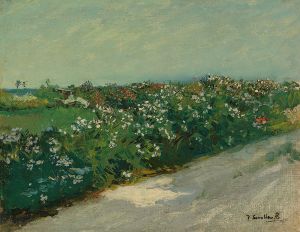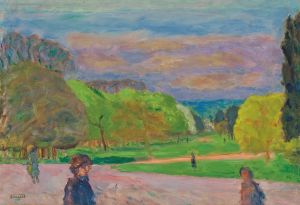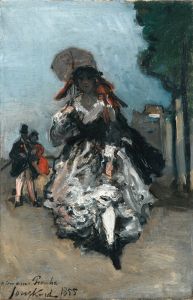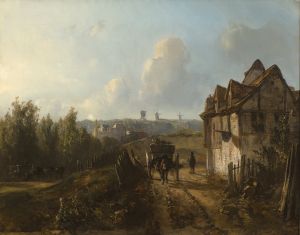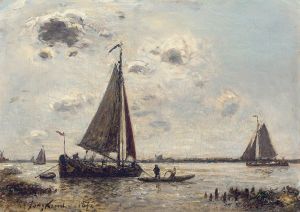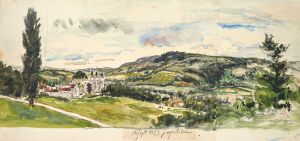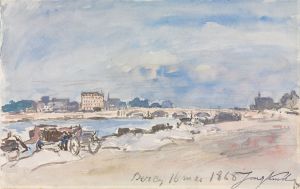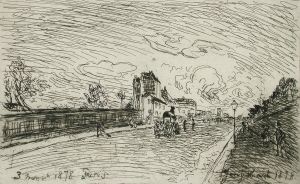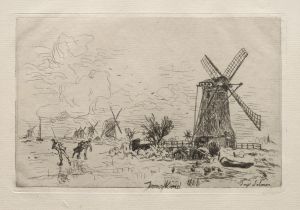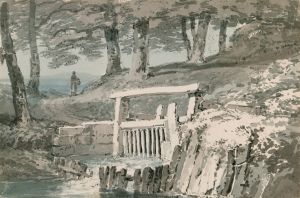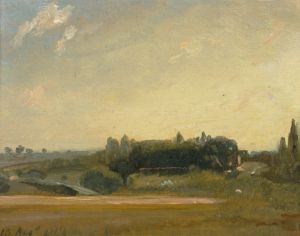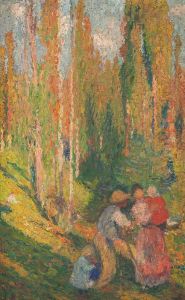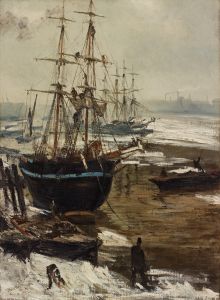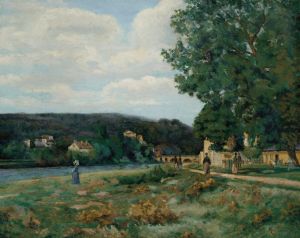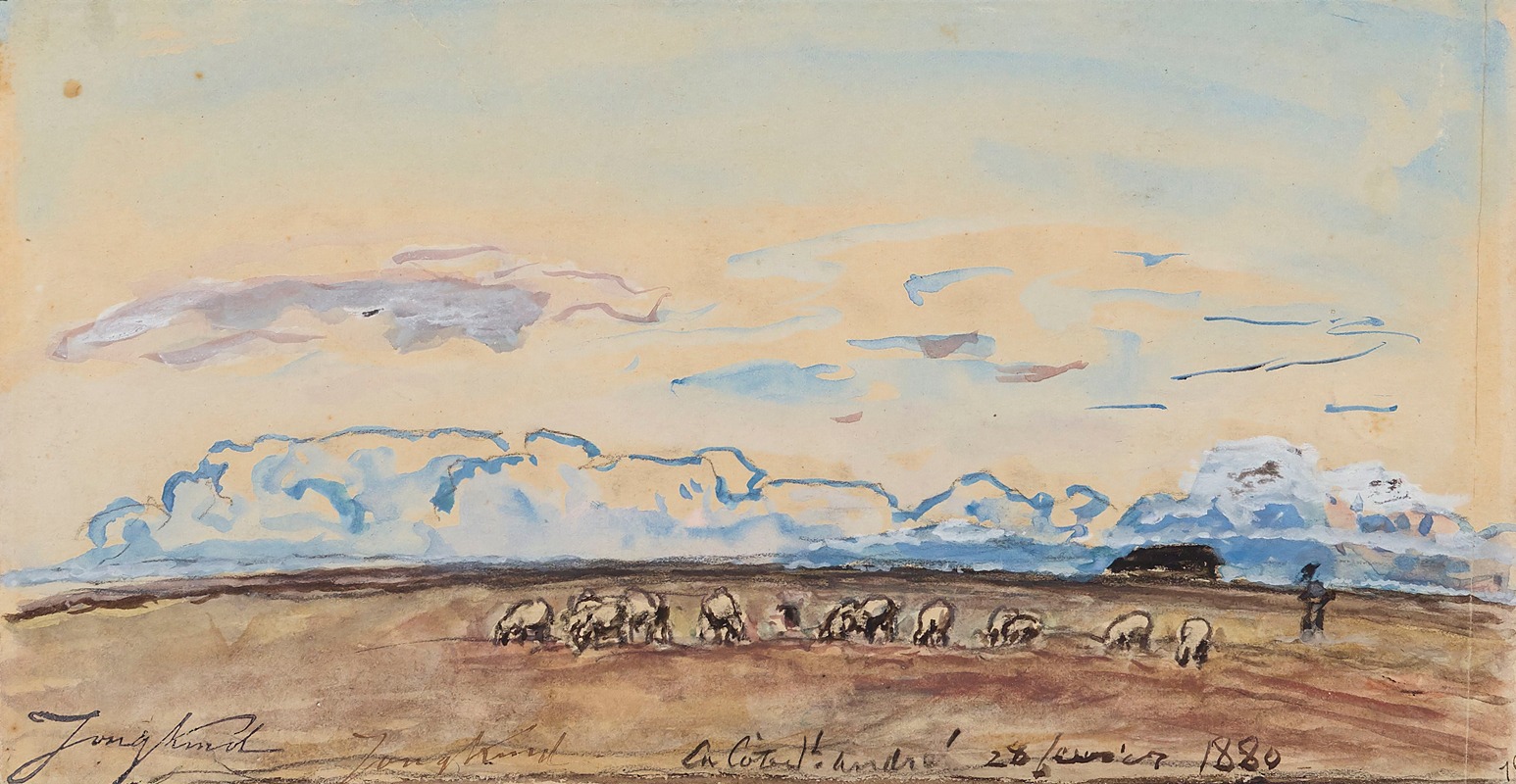
La Côte Saint André
A hand-painted replica of Johan Barthold Jongkind’s masterpiece La Côte Saint André, meticulously crafted by professional artists to capture the true essence of the original. Each piece is created with museum-quality canvas and rare mineral pigments, carefully painted by experienced artists with delicate brushstrokes and rich, layered colors to perfectly recreate the texture of the original artwork. Unlike machine-printed reproductions, this hand-painted version brings the painting to life, infused with the artist’s emotions and skill in every stroke. Whether for personal collection or home decoration, it instantly elevates the artistic atmosphere of any space.
Johan Barthold Jongkind was a Dutch painter and printmaker known for his significant contributions to the development of Impressionism. Born on June 3, 1819, in Lattrop, Netherlands, Jongkind spent much of his career in France, where he became an influential figure among the Impressionists. His work is characterized by its innovative use of light and color, capturing the transient effects of atmosphere and weather.
One of Jongkind's notable works is "La Côte Saint André," a painting that exemplifies his mastery in depicting landscapes. This artwork captures the serene and picturesque scenery of the French countryside, specifically the area around La Côte-Saint-André, a commune in the Isère department in southeastern France. Jongkind's choice of subject reflects his fascination with rural landscapes and his ability to convey the essence of a place through his brushwork.
"La Côte Saint André" showcases Jongkind's skillful use of light and shadow, a technique that would later influence the Impressionists. The painting is notable for its atmospheric effects, with a delicate interplay of light that suggests a particular time of day, possibly early morning or late afternoon. Jongkind's palette is typically muted, with soft blues, greens, and earth tones that evoke a sense of tranquility and harmony with nature.
Jongkind's approach to painting was innovative for his time. He often worked en plein air, or outdoors, which allowed him to capture the immediate effects of light and weather on the landscape. This method was relatively uncommon during his early career but became a hallmark of the Impressionist movement. Jongkind's ability to render the fleeting qualities of light and atmosphere was highly regarded by his contemporaries and earned him a place as a precursor to Impressionism.
The composition of "La Côte Saint André" is carefully balanced, with a foreground that leads the viewer's eye into the middle ground and beyond to the distant hills. Jongkind's brushwork is loose and expressive, yet controlled, allowing him to convey the textures of the landscape, from the foliage of trees to the undulating terrain. This technique adds a sense of immediacy and vitality to the scene, inviting viewers to experience the landscape as if they were standing within it.
Jongkind's influence on the Impressionists, particularly Claude Monet, is well-documented. Monet himself acknowledged Jongkind's impact on his development as an artist, noting that Jongkind's approach to capturing light and atmosphere inspired him to pursue similar themes in his own work. Jongkind's legacy is evident in the way he paved the way for a new generation of artists who sought to break away from traditional academic painting and explore the possibilities of capturing the natural world in innovative ways.
"La Côte Saint André" remains a testament to Jongkind's artistic vision and his role in the evolution of modern landscape painting. Through his work, Jongkind not only captured the beauty of the French countryside but also laid the groundwork for the Impressionist movement that would follow. His paintings continue to be celebrated for their pioneering approach to light, color, and composition, securing his place in the history of art.





